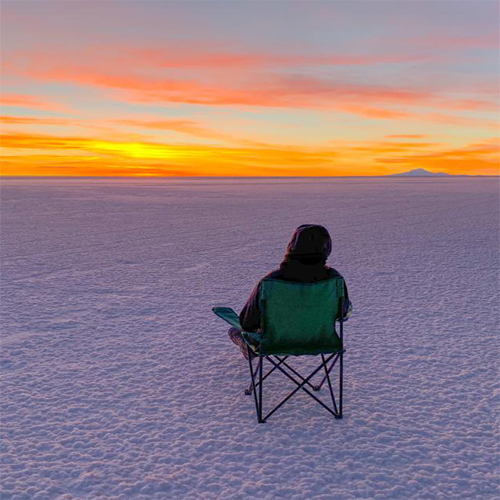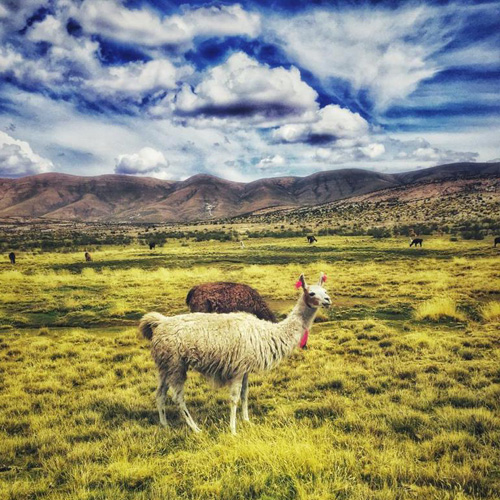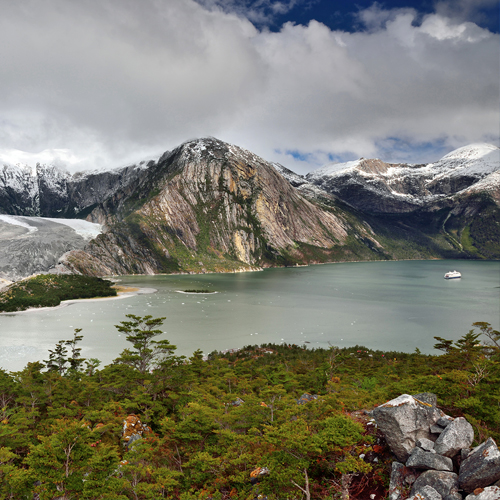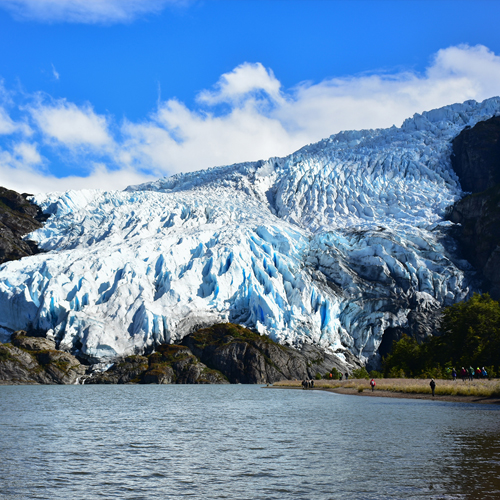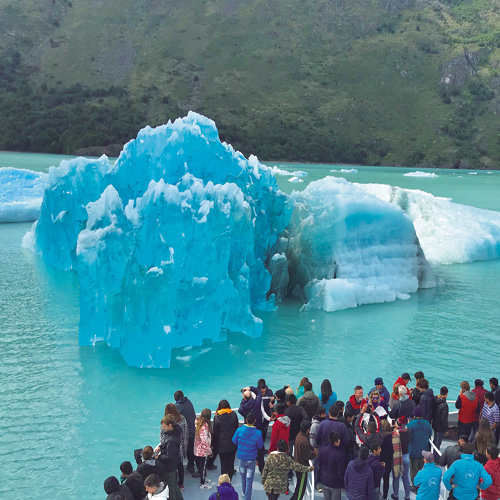EXTENSIONS
From Chile it is possible to accomplish various extensions to neighbor countries. In the north connecting through San Pedro de Atacama, Bolivia offers a variety of desertic landscapes, salt flats and lakes in Uyuni. Connected with our lakes and volcanoes, through out Puerto Varas, Argentina offers the beautiful city of Bariloche with its hills, trekking circuits, lakes and rivers. At the very south it is possible to connect the majestic Chilean and Argentinian Patagonia through Torres del Paine National Park, reaching El Calafate to discover its National Parks, glaciers, icebergs and navigation routes.
WHAT TO DO?
UYUNI
This massive salt and minerals expansion is the largest salt flat in the world, and where it is also possible to find a big number of lakes, volcanoes, valleys and hot springs. James flamingos, a unique species, can be seen at the different lakes. The Uyuni Salt Flat is also famous for a group of rocky outcrops, among them Isla del Pescado with its giant cactus. It is also the salt flat that has the largest reserve of lithium in the planet.
USHUAIA
Leaving from Punta Arenas, on the way to the capital province of Tierra del Fuego, and the southern most city in the world, Ushuaia, Argentina. This city is full of charm, stories and legends from this beautiful place. Its main attractions are the Beagle Channel that connects the Atlantic with the Pacific, from where a wide range of tours are organized to winter centers, offering among others alpine skiing, snowboarding, and sleigh riding pulled by siberian husky dogs. There is also Tierra del Fuego National Park, the only one in Argentina that combines mountains and forests with a sea environment. Ushuaia is the entry doorway to the Antarctic, the end of the world and beginning of all.
CALAFATE
Departure from Punta Arenas to El Calafate, Argentina. This city located in a small plateau between the Calafate Hill and the Argentinian Lake, the largest in the country. This is the starting point for the different tours to visit the glaciers, do trekking and sailing. The city is located in the province of Santa Cruz, it is where Los Glaciares National Park begins, declared Natural World Heritage Site by de UNESCO in 1981. The park has the largest fresh water reserve on the planet, supplied by 48 glaciers that break off from the Patagonian Icefields, and a beautiful place to embark on a nautical safari and observe glaciar calving.
